Investment is considered a source of generating safe returns, as it doesn’t require any technical skills to assess the performance of the company. But it requires a huge amount of capital and time, as leverage is not provided in an investment portfolio. Individuals who want to make quick money mainly focus on day trading, which requires more attention and deep technical knowledge.
There are also individuals who neither want to wait for years for their money to multiply nor have the deep technical knowledge to start day trading. For them, swing trading is the best option to go for.
What is Swing Trading?
Swing trading is also known as short term trading, in which a trader holds its position for a week or two. That means they generally square off their positions within a week or two. Individuals who are into swing trading are known as swing traders.
Swing traders basically set the short term targets, in addition to this they get leverage, which enables them to make more money while using less capital . As it neither requires a year or two to multiply the capital nor it requires immense capital to work upon.
Further, let’s discuss the method of selecting stocks for swing trading. To understand these steps a reader requires a basic understanding of technical analysis.
Method of selecting stocks for swing trading
Though there are several methods to select stocks for swing trading. We are going to disclose our method, which we have back tested and have obtained 85–90% accuracy.
1. Timeframes to work on
At first, we have to look for sustainable time frames that suit our purpose of swing trading. Generally, traders use weekly, daily, and an hour time frames to do their technical analysis. Here we are going to use the same weekly and daily time frames to analyze the charts.
2. Trend Analysis
The next step after ascertaining the time frames, we will be looking for definite trends. Whether you are a day trader, swing trader, or investor. Finding the right trend is the first and foremost task of every market participant. As it is said, “ Trend is your friend” you should never trade against the trend, it will decrease your winning rate and give false hope.
From a swing trading perspective, we will be doing our trend analysis on a weekly time frame. In order to find out the right trend we should follow certain steps.
- If the stock will be in a downtrend, it will show Lower Highs(LH) and Lower Lows Pattern(LL). Let’s look at the ICICI Prudential chart. It signifies a downtrend.
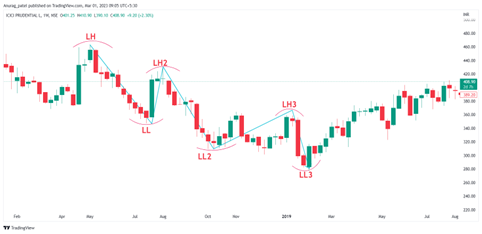
- If the stock will be in an uptrend, it will show Higher highs (HH) and Higher lows (HL) Pattern.

This is how the trend of the particular stock is ascertained.
For instance, let’s take the example of Tata Steel to understand this strategy better.
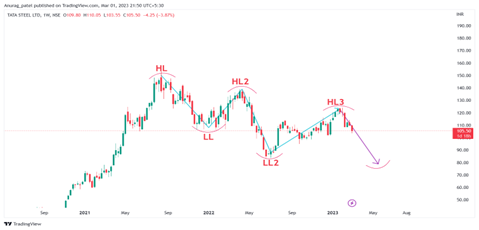
As a first step we require to identify the trend on a weekly timeframe, as per the chart above it is clearly visible that the stock is in Higher lows and lower lows pattern.
3. Look for trendlines in the direction of the trend
After finding out the trend on a weekly time frame in the next step we should look at whether the stock is forming any trendline setup on a daily time frame or not, if not then ignore the particular stock. In the case of Tata Steel, we could find a trendline which has been broken down.
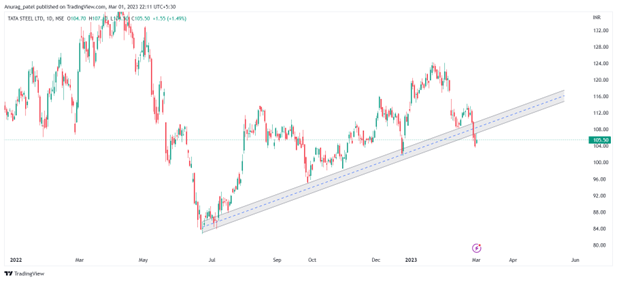
4. Breakout and Fakeout trade on a daily timeframe
Breakout refers to breaching the trend line and fake out here means bouncing from the trend line. Always try to take trade either on fake out or breakout of the trend line, if we see Tata Steel, there is a breakout of the trend line on daily time frame. Therefore we can get a possible short selling trade.
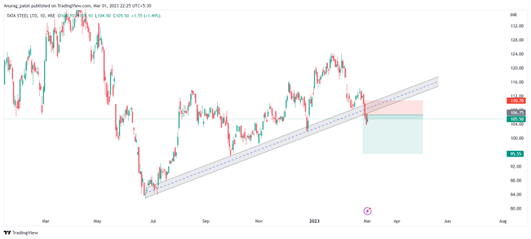
If we look at Tata Motors on the other hand we could see a fakeout trade which has been already initiated.
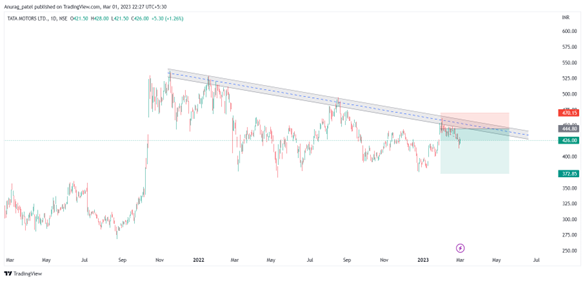
5. Target and StopLoss
The fifth and the second last step is to mark the target and the stop loss. This is the important parameter that determines the trading discipline of an individual trader. It is advised that a swing trader should follow a minimum 1:2 risk-to-reward ratio. Which means he should earn at least 2 rupees by risking a single rupee.
As far as stoploss is concerned it should always be above the breakout momentum or marubozu candle.
In the case of Tata Steel, we have placed our stop loss slightly above the marubozu candle.
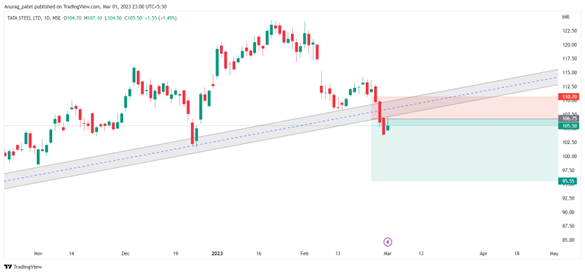
The target should be divided into multiple levels as per the nearest support as shown in the chart below.
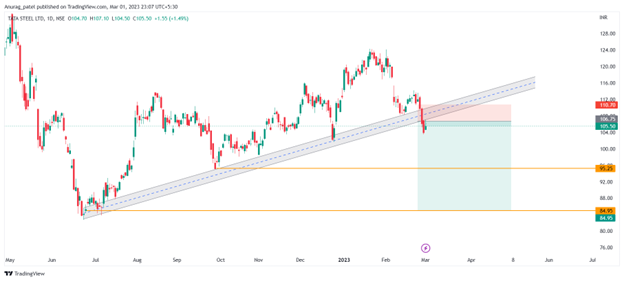
6. Hold your wins and cut your losses
Last but not the least, a market participant, irrespective of any domain should follow this principle of “holding the profitable trades and cutting down the losing ones”. This is the key to being profitable in the financial market. As a swing trader, it becomes far more important to stick to your winning trades and quickly cut down your losing trades.
Conclusion
Swing traders neither need to give immense attention to the market nor do they need to use any deep technical analysis tools. The simple strategy discussed above could help them make money in the market. However, the strategy will remain profitable only when it is trusted and followed sincerely. Besides these, it is also advised that a trader or any market participant should keep a record of or maintain a journal for both winning and losing trades. Which will ultimately help them to track their performance, and will also help them to learn through their mistakes etc.
Maintaining a trading journal is a crucial skill that is very much required to enhance both the experience and skill of the trader. It is said that a trader who keeps a record of his or her performance will always end up becoming more profitable and disciplined.







